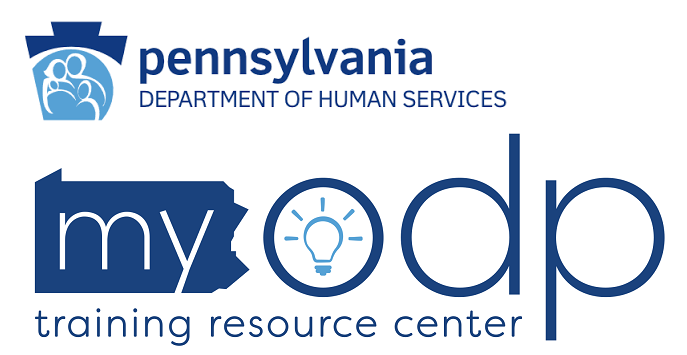Positive Approaches Journal, Volume 12, Issue 4
Putnam & van Heumen | 21-27

Volume 12 ► Issue 4 ► February 2024
Why We Need to Stop Othering People Aging with Disability
Michelle Putnam, PhD and Lieke van Heumen, PhD
One of the most frequent things we
do as scholars studying the phenomenon of aging with disability is explain who makes
up this population. The standard answer we provide is that persons aging with
disability are people who first experience impairment and subsequently
disability before age 60 or 65 – the historical chronological ages for when
people become eligible for traditional aging-related federal programs like the
Older Americans Act (age 60) (Administration for Community Living, 2023) and
Social Security retirement benefits (age 65) (Social Security Administration,
2023). Despite initiatives like Reframing Aging (Gerontological Society of
America, 2023), these numbers remain our cultural markers for when later life
supposedly starts. Persons aging with disability are a heterogenous population,
and includes anyone who experiences sensory, physical, mental and/or cognitive
long-term disability prior to later life. Examples are people who at birth, or
when they were children, were identified to have impairments like intellectual
and developmental disabilities (I/DD). The population also includes people who
incurred injuries like spinal cord injuries or chronic diseases like multiple
sclerosis, and people with sensory impairments, mobility impairments or
work-limitations.
Over the many years we have described and discussed this population, we still find ourselves starting from square one every time we begin a presentation, book chapter, article, or discussion – to clarify who we mean and to explain what is different about people in this group. We give examples – persons with I/DD might experience dementia earlier than those without I/DD. Individuals who experience blindness may have difficulty with wayfinding strategies they perfected as walkers if they begin to use mobility supports like a wheelchair in later life. Chronic pain may cause individuals with neuromuscular conditions to exit the workforce when pain levels are high or when workplace accommodations fall short. Autistic individuals may not be able to go about their usual routines when they become too physically demanding. We can come up with many more examples. Recently, we took a moment to reflect on this need to continually introduce this population to our audience. There seems to be little change in awareness of this population, despite the experience of aging with disability having been academically studied for several decades now (albeit by only a small number of researchers). This makes us wonder if we need a new way to discuss this group of people to increase their recognition in both domains of aging and disability. Here, we look at persons aging with I/DD as an example.
People with I/DD have historically been targeted by eugenics and other policies aimed at eliminating medical deviance, and they have been segregated through public policies and programs (Nielsen, 2012). Our hunch is that because of their long history of exclusion, people with I/DD are effectively “othered” into a category of individuals that has been extracted from the general aging population. Pulled out and to the side, if you will – and seen as a separate category of people. We see this clearly in the lack of inclusion of people with I/DD in gerontological research. There are aging-related studies with persons with I/DD as the study sample, but very few studies with general population samples are inclusive of persons with I/DD. It is also rare to see secondary data sets capture long-term disability, such as by including measures that ask if someone has been diagnosed with I/DD or how long a person has had an impairment or disability (i.e., duration or onset) (Coyle & Putnam, 2017). This means that many of the longitudinal aging studies that use these datasets create knowledge about aging experiences and the status of older adults without identifying persons with IDD or including long-term disability.
We also see an ongoing segmentation between U.S. federal and state programs for people who first experienced disability in early and mid-life and for those who may experience disability in later life. Although there are increasingly more initiatives that focus on families with individuals growing older with I/DD (Administration for Community Living, 2023), segmentation and exclusion of people with I/DD and their families from aging programs remains an ongoing issue. Individuals are rarely integrated and served by age, regardless of impairment or disability status. In practice, we see interest of service providers in aging-related organizations to increase training, knowledge, and inclusionary practices to support people with I/DD in later life, but there is limited investment in capacity building at federal and state levels to make that happen. This is a substantial problem as there is an absolute dearth of academic training on aging with disability in all fields, making on-the-job training critical to ensure that the needs of older people with I/DD and their families are met.
We ourselves have likely contributed to this segmentation as we employ the contrast of people aging with disability and people aging into disability, attempting to bring attention and awareness to this first group. It is perhaps easiest for our audiences to imagine that aging with I/DD is different than growing older without I/DD. For people with I/DD and other diverse cognitive, sensory, and physical traits, chronic conditions, and impairments, there are indeed differences in disability experience based on age of onset, duration of disability, and life stage. In identifying and learning more about those differences, we have often centered the disability experience – called it out as a distinguishing factor in the aging process. We have been articulating the need to recognize people with disabilities, including individuals with I/DD, as part of the aging population. We have been seeking inclusion by talking about advancements in longevity specifically. People with long-term disabilities are living longer than ever before. But stepping back, if we view aging as a lifelong process that starts long before age 60 or 65, then we recognize that people with I/DD, and others with long-term disability experiences, have always been a part of the aging population.
We collectively construct the definition and categories of the life course and its stages (Priestley, 2003). We have imagined a world where optimally, disability is not experienced until the very end of life and when it does, we imagine it to reduce the potential to engage – disability is about loss. This core tenet in Gerontology is exemplified by the goal of compressing morbidity – or concentrating disability towards the last years of life as much as possible (Minkler, 1990), and the focus on retaining independence rather than gaining or sustaining independence. Many “big ideas” in Gerontology are premised on these goals of avoiding and delaying disability and limiting its impact. This approach excludes people with disabilities by not recognizing them as an expected part of the general aging population, because by having disability in early and mid-life they have already failed to match our socially constructed expectations. This “othering” has led us to argue for inclusion for persons with disability into aging-related research, policies, programs, and educational training, but perhaps what we really need is to argue for ending their exclusion by recognizing the greater diversity of the aging experience and the older population in the first place.
This may seem like splitting hairs, a small pivot in approach, but we do not believe it is. We recognize that there is still a need to describe what is different about growing older with diverse cognitive, sensory, and physical traits, chronic conditions, and impairments, like I/DD. However, we realize that we need to frame this discussion, not as an ask for inclusion into Gerontology and aging-related policies and programs because of more people with disabilities living longer lives, but as a request to end the exclusion of people with disabilities. We can change how we frame, study, and support all people over the life course. Differences in humans are natural and normal. Disability is a variance in experience that can influence the aging process and outcomes across the life course – including later life.
Older people with I/DD have both similar and different needs and experiences compared to older people without I/DD. We need to be able to recognize differences while not “othering” older people with I/DD. We need to ground aging and growing older with I/DD as part of the larger collective set of experiences of aging. To conclude, we need to help people with I/DD age well and live meaningful lives, by ensuring that general aging services and policies can support them. If additional supports are needed, they should be provided because the older population is diverse, not because they are for the “other” aging population.
References
1. Administration for Community Living. (2023a, December 12). Older Americans Act. Administration for Community Living. Older Americans Act.
2. Administration for Community Living. (2023b). RAISE Family Caregiving Advisory Council. Administration for Community Living. Recognize, Assist, Include, Support, & Engage (RAISE) Family Caregivers Act Advisory Council.
3. Coyle, C. E., & Putnam, M. (2017). Identifying adults aging with disability using existing data: The case of the Health and Retirement Study. Disability and Health Journal, 10(4), 611–615. Disability and Health Journal.
4. Gerontological Society of America. (2023, December 12). Reframing Aging Initiative. Countering Ageism by Changing how we Talk about Aging. Reframing Aging. National Center to Reframe Aging.
5. Minkler, M. (1990). Aging and disability: Behind and beyond the stereotypes. Journal of Aging Studies, 4(3), 245-260.
6. Nielsen K. E. (2012). A disability history of the United States. Beacon Press.
7. Priestley, M. (2003). Disability: A life course approach. Cambridge: Polity.
8. Social Security Administration. (2023, December 12). Manage Benefits and Information. Social Security Administration. Social Security Administration.
Biographies
Michelle Putnam, PhD, MGS, is a Professor and Jennifer Eckert '08 School of Social Work Endowed Chair at Simmons University, School of Social Work in Boston, Massachusetts. Her scholarship focuses on the intersections of aging and disability, with a particular focus on aging with disability, long-term services and supports, and participation. She is a Fellow of the Gerontological Society of America and Member of the National Academy of Social Insurance.
Lieke van Heumen, PhD, FAAIDD (she/her) is a Clinical Associate Professor in the Department of Disability and Human Development at the University of Illinois Chicago. Her research interests include aging of people with intellectual and developmental disabilities, inclusive research methodology, and the scholarship of teaching and learning. She was a 2019-2020 American Political Science Association Congressional Fellow and Health and Aging Policy Fellow, placed with the U.S Senate Special Committee on Aging in the Office of Ranking Member Senator Bob Casey.
Contact Information
Michelle Putnam
Email: michelle.putnam@simmons.edu
Lieke van Heuman
Email: lvheumen@uic.edu




